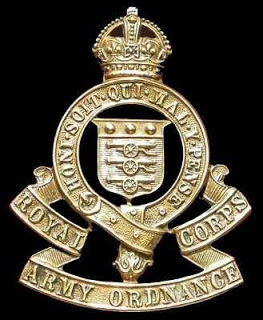
I’d never heard of the tooth-to-tail ratio before. It’s the ratio of the number of combat soldiers (tooth) to the number of soldiers involved in a support capacity (tail).
I guess I knew that every army needed support and logistics but, in my mind, when someone is a soldier, that means they are in a combat role. Such is not the case. While numbers vary depending on the era and the army, the ratio can vary from 15% to 40%. Which means there are generally a lot more support soldiers in an army than combat soldiers.
In this latest blog, I want to revisit the story of Quartermaster Sergeant Bertram Anthony Balment of the Royal Army Ordnance Corps, who served as the stenographer at the court martial of German spy Josef Jakobs.
I had done a brief post about Balment and the court’s interpreter (Lt. W.J. Thomas) five years ago, but the piece I wrote on Balment was minuscule. I’ve since dug up some more info….
Balment Origins
Bertram Anthony Balment was born 23 March 1908 in Croydon to parents Bertram and Mary Caroline (née Row) Balment. The family resided at 19 Bruce Road, South Norwood in Croydon. According to the 1911 Census, Bertram and Mary Caroline had been married about three years and the marriage index indicates they were married in 1907. Both Bertram and Mary Caroline were born around 1888, she in Camberwell and he in the neighbouring district of Peckham. Bertram seems to have had a relatively stable job, working as an Assurance Agent for Prudential Assurance Company Ltd. He hadn’t always been a bored and staid insurance agent though…
Bertram Balment was born in the second quarter of 1888 in Peckham/Camberwell to James and Florence Sarah (née Dibble) Balment. James was a lithographic artist and had been born in “Gloucester[shire], Clifton” (now part of Bristol) while his wife, Florence, had been born in “Gloucester[shire], Bristol, St. Phillips”. Bertram was their third child, preceded by Alfred James (born 1881) and Walter Tom (born 1883). Both of the older sons had been born in Bristol, so somewhere between 1883 and 1888, the family had pulled up roots from Bristol and made the trek to Croydon. What work James could find as a lithographic artist is unknown but the family didn’t stray far from Croydon. In 1902, James and Florence would have a fourth child, Walter, who was born in Peckham. Unfortunately, ten years later, in 1912, Florence passed away leaving James to care for a young son while managing his career. No surprise then that in 1913 he remarried to one Charlotte Ann Sweatman. All three of his eldest sons were already out in the world…
Balment Brothers
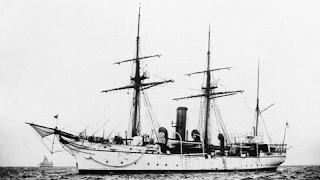
Alfred James was a clerk who, in April 1898, lied about his age and made himself a year older (just over 18 years) in order to join the East Surrey Regiment. A month later, he was transferred to the Royal Marines. In October 1899 he shipped out aboard the HMS Caledonia returning to Chatham on the River Medway in October 1900.
A month later, perhaps after a quick leave, he shipped out again, this time aboard the newly commissioned HMS Condor, a sloop of the Royal Navy. The ship had been launched in 1898 but was doomed to a very short career.
Alfred sailed with Condor to the west coast of Canada where the ship served on the Pacific Station. On 3 December 1901, while on passage from Esquimalt to Hawaii, she foundered in a gale off of Vancouver Island (position approximately 48°15′N 125°40′W). Her last contact was with the light station on Cape Flattery. All hands (140 souls) were lost. The British Navy, after holding out hope that the ship might still be found, finally declared her missing on 17 March 1902. How long it might have taken news of Alfred’s passing to reach his family in Croydon is unknown.
Living on Vancouver Island, I know that the west coast of the island is a veritable graveyard of sunken vessels and it is therefore intriguing to learn a bit more about one of those vessels and its very tangential relationship to the story of Josef Jakobs!
Despite the loss of their eldest brother, Walter Tom and Bertram were not deterred from military service. In 1904, Bertram left his job as a Museum Attendant at the British Museum and signed on with the Royal Field Artillery claiming to be 18 years of age (he was only 16). He gave his next of kin as his father (James Balment) and older brother (Walter Tom). His attestation papers don’t record much in the way of service so it would appear he didn’t serve long. He signed up on 16 January 1904 and the next entry states he was “posted” on 22 March 1904 but, after that, nothing.
Three years later, in 1907, Bertram married Mary Caroline Row in Greenwich. suggesting that his military career was short-lived. With the outbreak of the First World War, however, Bertram got his chance to rejoin the Royal Field Artillery. While his attestation papers are not available, we do know that on 5 October 1917, he was admitted to the 2nd General Hospital with an abscess on his right forearm and was then transferred to a sick convoy on 22 October. He was a Bombardier and would end the war with Squeak and Wilfred (the British War Medal and the Victory Medal).
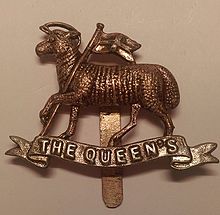
As for Walter Tom Balment, he married Clara Ellen Jardine in 1905 and, by 1911, had two young lads. Walter Tom had a rather dull job as a “lamp warehouse clerk”. With the outbreak of the First World War, Walter signed up, but unlike his brother Bertram, ended up with the Royal West Surrey Regiment (a.k.a. Queen’s Regiment) as a Private, likely in one of the Labour Battalions.
Rather than being a member of the “tooth” end of the army, Walter ended up serving with the “tail” end. He was later transferred to the Labour Corps (formed in 1917). What role Walter played in the war is unknown but, with his experience as a warehouse clerk, it is likely that he was involved in the shipping and distribution of supplies and to the troops on the Continent.
Walter passed away on 20 November 1921 in Croydon according to the Pension Record Ledgers. He was only 38 years old and one wonders if he had been wounded during the war.
Bertram Anthony Balment
As for Bertram’s young son, our future stenographer at Josef’s court martial, he seems to have had a rather stable upbringing, and, unlike his father and uncle, would show no interest in joining the military at the the tender age of 16 or 17.
In 1913, at the age of 5, Bertram Anthony was admitted to Whitehorse Manor Infant’s School in Croydon. He left the school on 12 April 1915, destined for “Boys’ Dept”. At that point, the family was living on Cassland Road, just a few blocks from their previous address at Bruce Road.
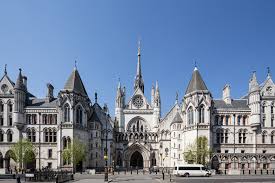
In 1930, Bertram Anthony married Mary Teresa Grannell (born 30 May 1909) in Kingston. By 1939, the couple was living at 10 Bulganak Road, Thornton Heath in Croydon, just a few blocks from his childhood homes. According to the National Register, Bertram Anthony was an official shorthand writer at the Royal Courts of Justice. Despite being married for nine years, the couple apparently had no children.
After the war, Bertram Anthony appears in the London Electoral Registers (1949-1960) as residing at 12 New Court W.C.2, part of the judicial complex near the Royal Courts of Justice. It is therefore extremely likely that, after the war, he resumed his career as an official shorthand writer. Although, given that he served as the stenographer at the court martial of Josef Jakobs, it would seem that his wartime service with the Royal Army Ordnance Corps (the “tail” end of the army) wasn’t all that different from his peacetime work.
Interestingly, in the 1959 Electoral Register, one Richard H. Balment also resided at 12 New Court W.C.2. At first I thought that this might be Bertram Anthony’s son, but the genealogical records indicate that “Richard H. Balment” was born in 1927 to a mother whose maiden name was Roro. I have been unable to track his parents any further, nor find a marriage registration for a Balment and a Roro in the 1920s. It appears that Richard was a court reporter in 1978.
Bertram Anthony passed away in Croydon on 15 September, 1959 at the age of 51. He resided at 20 Cassland Road and left £4893 10s 1d to his widow, Mary Teresa Balment. A quiet end to a live lived in the shadow of the Royal Courts of Justice.
(Header image – “Book Written in Shorthand” by robotbrainz is licensed under CC BY-NC-ND 2.0)
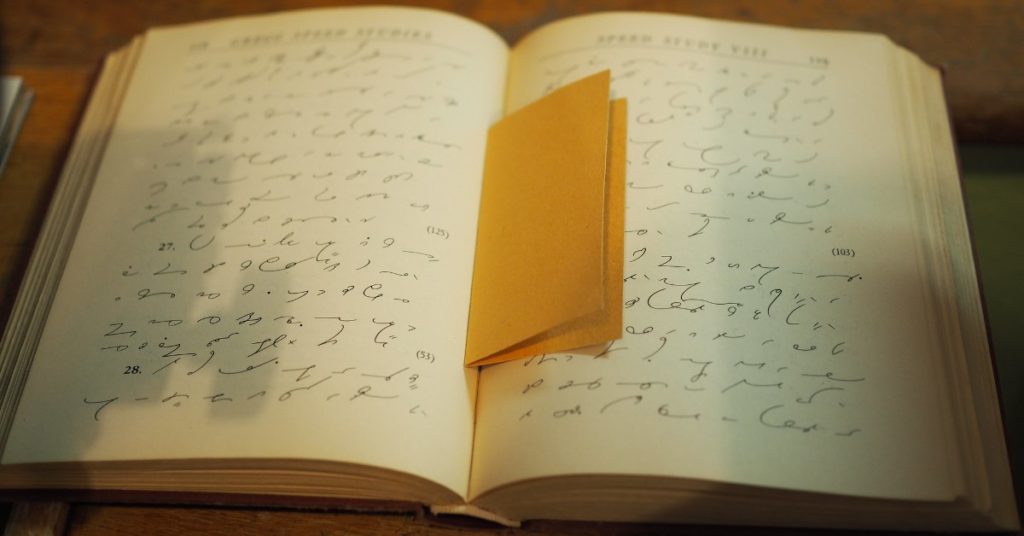
Could that "one Richard H. Balment also resided at 12 New Court W.C.2." — "born in 1927 to a mother whose maiden name was Roro" — possibly be a son of Bertram Anthony either by a previous marriage, or born out of wedlock?
There was time after the 1927 birth, for Bertram Anthony to marry Mary Teresa Grannell in 1930.
It definitely could be. I wasn't able to find a marriage registration for Bertram and anyone else. Although, as you say, it could be that the Richard was born out of wedlock.